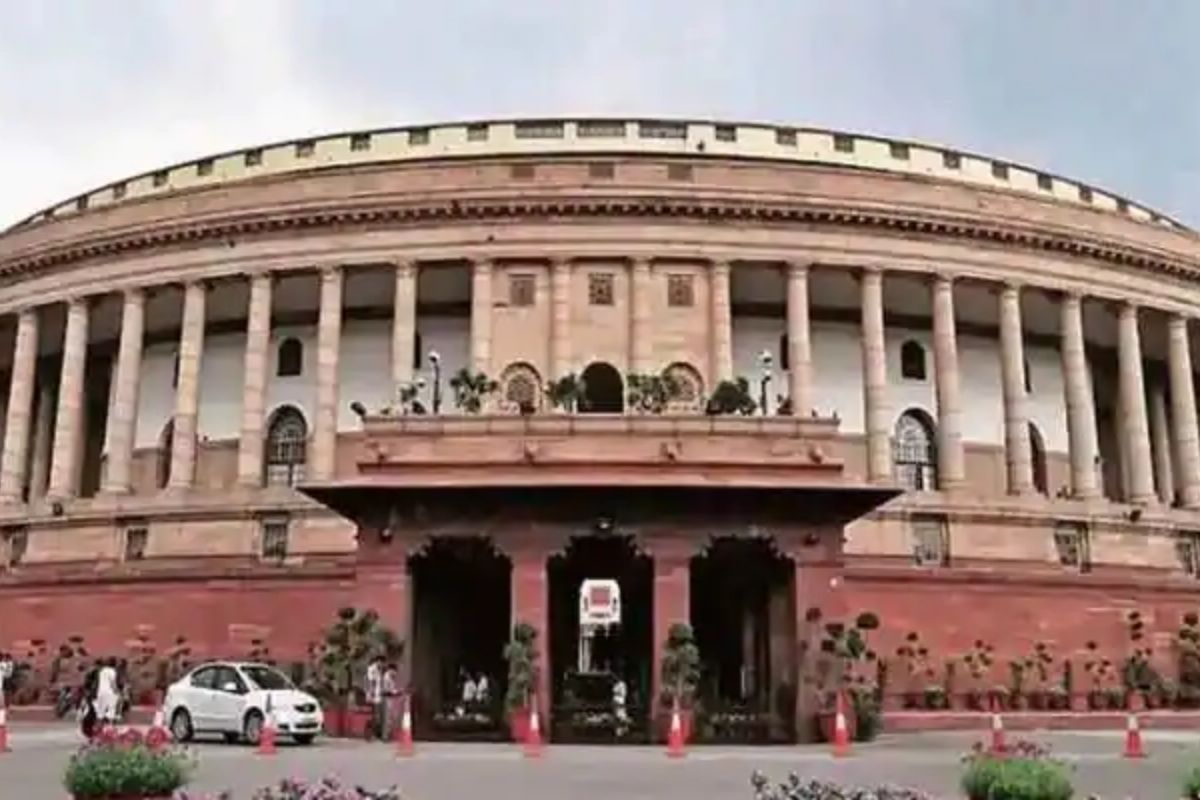Context
-
Ahead of Rajya Sabha elections in four states on June 10, various parties have accommodated legislators from at least three states in resorts, away from potential poaching by rival parties.
Why are Rajya Sabha elections important?
- For both the ruling party and the Opposition, every Rajya Sabha seat counts as any Bill, barring those designated as Money Bills by the Lok Sabha Speaker, needs the assent of the second chamber to become law.
- Rajya Sabha, or the Council of States, has 245 seats. Leave aside reaching the halfway mark of 123, no ruling party has ever touched the 100 mark in the last three-and-a-half decades.

Photo Credit: India.com - Rajya Sabha has a limited role in the case of Money Bills.
- It cannot amend a Money Bill, but can recommend amendments within a stipulated time, and Lok Sabha may either accept or reject all or any of these.
How often are Rajya Sabha elections held?
- Rajya Sabha is a permanent House and cannot be dissolved. To ensure continuity, one-third of its members retire after every second year, under Article 83(1) of the Constitution, and “biennial elections” are held to fill these vacancies. The term of a member is six years.
- Out of the 245 members, 12 are nominated by the President and 233 are representatives of the States and Union territories of Delhi and Puducherry.
- Vacancies arising due to resignation, death or disqualification are filled up through bypolls, and those elected serve out the remainder of their predecessors’ term.
- Under Article 80(3), the 12 nominated members should have special knowledge or practical experience in matters like literature, science, art etc. A nominated member may join a party within six months of taking a seat.
Rajya Sabha polls: Who votes, and how?
- Rajya Sabha MPs are elected by MLAs through an indirect election. Article 80(4) provides that members shall be elected by the elected members of state Assemblies through a system of proportional representation by means of a single transferable vote.
- The Fourth Schedule to the Constitution provides for allocation of Rajya Sabha seats to the states and Union Territories, on the basis of the population of each state. For instance, there are 31 Rajya Sabha seats in Uttar Pradesh and 1 in Goa. Elections are held there are more candidates than vacancies; otherwise, candidates are elected unopposed.
How are the votes counted?
- The number of votes a candidate requires depends on the number of vacancies and the strength of the House. If there is only one vacancy, the required quota under the Election Commission’s Conduct of Election Rules, 1961, is calculated by taking the number of votes polled, divided it by 2, and adding 1. For example, if 100 votes are polled in an Assembly, the Rajya Sabha candidate would need:
- 100/2 + 1 = 51 votes
- If there is more than one vacancy, the equation is based on an assigned value of 100 for every first-preference vote. The values of the votes credited to all candidates are totalled. The total is divided by 1 more than the number of vacancies, and 1 is added to this quotient.
- For example, if 100 members of an Assembly vote for 3 Rajya Sabha vacancies, the required quota by any candidate would be
- (100 × 100)/(3 + 1) + 1 = 2501
- If for any seat, candidates fail to get the specified number, the second-preference votes will be taken into account, but with a lower value.
Beyond passing Bills, why do Rajya Sabha numbers matter?
- Rajya Sabha enjoys some special powers. If it passes a resolution by a majority of not less than two-thirds of members present and voting, saying that it is “necessary or expedient in the national interest” that Parliament should make a law on a matter enumerated in the State List,
- Parliament becomes empowered to make a law on the subject. Such a resolution remains in force for a maximum of one year but this period can be extended by one year at a time by passing a similar resolution.
- A similar route can be adopted for recommending creation of one or more All India Services common to the Union and the states. Parliament becomes empowered to create such services.
- Also, Rajya Sabha has a role to play if the President, as empowered by the Constitution, issues proclamations in the event of national emergency, in the event of failure of constitutional machinery in a State, or in the case of financial emergency”. Every such proclamation has to be approved by both Houses of Parliament within a stipulated period.
- Under certain circumstances, however, Rajya Sabha enjoys special powers. If a proclamation is issued at a time when Lok Sabha has been dissolved or the dissolution of Lok Sabha takes place within the period allowed for its approval, then the proclamation remains effective, if the resolution approving it is passed by Rajya Sabha within the period specified under Articles 352, 356 and 360 of the Constitution.
Reference:
https://indianexpress.com/article/explained/explained-electing-rajya-sabha-mps-7957755/
Visit Abhiyan PEDIA (One of the Most Followed / Recommended) for UPSC Revisions: Click Here
IAS Abhiyan is now on Telegram: Click on the Below link to Join our Channels to stay Updated
IAS Abhiyan Official: Click Here to Join
For UPSC Mains Value Edition (Facts, Quotes, Best Practices, Case Studies): Click Here to Join
